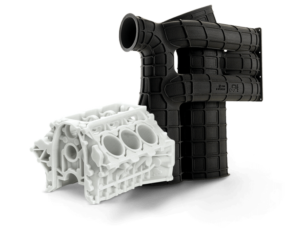Stereolithography (SLA) is a cutting-edge 3D printing technology that offers unmatched precision, accuracy, and detail in the production of prototypes and end-use parts. This method of 3D printing uses a laser to cure liquid resin into a solid object, layer by layer. The end result is a high-quality, highly precise, and intricate object that is perfect for use in a wide range of industries and applications.
What is Stereolithography 3D Printing?
Stereolithography is a type of photopolymerization, which involves using light to solidify liquid resins into solid objects. The process begins by coating a build platform with a layer of liquid resin. A laser then traces the cross-section of the object to be printed, curing the resin and solidifying it into a single layer. This process is repeated until the entire object has been built.
Advantages of Stereolithography 3D Printing
There are numerous benefits to using stereolithography 3D printing, including:
Precision: The high-precision laser technology used in SLA printing allows for incredibly precise and accurate results, making it ideal for prototyping and producing parts that require exact measurements.
Speed: SLA printing is faster than many other 3D printing technologies, making it possible to produce parts and prototypes quickly and efficiently.
Material options: There is a wide range of resin materials available for use with SLA printing, including clear, flexible, and even bio-compatible resins.
Surface finish: The high-quality surface finish of SLA-printed parts makes them ideal for use in applications where a smooth, polished surface is required.
Complex geometry: The ability to print intricate and complex shapes and geometries makes SLA printing a versatile and highly capable technology.
Applications of Stereolithography 3D Printing
SLA printing has a wide range of applications, including:
Prototyping: The speed and precision of SLA printing make it an ideal choice for prototyping, allowing for rapid iteration and testing of new designs.
Manufacturing: SLA printing can be used to produce end-use parts and components, making it a valuable tool for companies looking to streamline their manufacturing processes.
Medical devices: The use of bio-compatible resins in SLA printing makes it possible to produce medical devices and implants that are safe for use in the human body.
Art and design: SLA printing is also used in the art and design world, allowing artists and designers to create intricate and complex objects that would be difficult or impossible to produce using traditional manufacturing methods.
Conclusion
Stereolithography 3D printing is a highly advanced and versatile technology that offers numerous benefits and applications. Whether you’re looking to rapidly prototype a new design, streamline your manufacturing processes, or produce intricate and complex objects, SLA printing is the perfect solution. So, it is no wonder that it is considered as the future of prototyping and manufacturing.
For more information go to https://quickparts.com/


